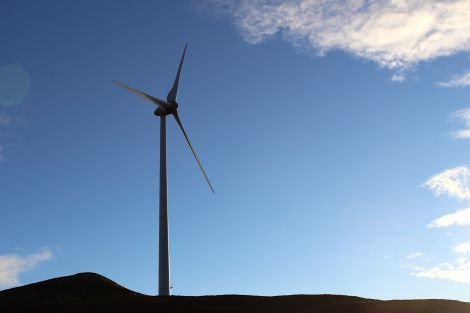Energy / Decarbonising Shetland’s oil industry
LARGE wind farms planned for Shetland mainland as well as on the island of Yell could play a major role in helping the UK oil industry go green, according to the chairman of the council’s development committee.
Councillor Alastair Cooper said on Thursday that the sudden interest of the oil industry in green energy was a game changer for renewable projects Shetland.
Welcoming Wednesday’s decision by energy regulator Ofgem to approve Scottish and Southern Electricity Networks’ (SSEN) proposal not to replace the Lerwick power station after 2025 and instead pay £251 million towards the cost of a 600MW transmission link, Cooper said the announcement was “another piece in the jigsaw” which would ultimately decide whether or not Shetland would get a cable linking the isles to the national grid.
Wind farm developer Viking Energy has always insisted it remains committed to its controversial 457MW project despite failing to attract any government subsidy under the Contracts for Difference scheme in the autumn.
With the oil industry emerging as a new major player in the renewables jigsaw it is becoming increasing clear why the company, which is now operated by SSE, remained confident all along.
Cooper said: “The game has changed very much in 2019 with the interest of the oil industry west of Shetland.
“They need to go green and as a result the interconnector is more than just generating renewable energy in Shetland; it actually is about sustaining an existing industry in Shetland.”
The oil industry is already actively looking into decarbonising on and offshore facilities, including Sullom Voe Terminal (SVT) and the vast Clair oil field to the west of Shetland, which is expected to produce oil until 2050.
SVT operator EnQuest recently confirmed there would be a “radical change to Sullom Voe Terminal’s power generation facilities” by removing the existing power station in the coming years as it attempts to reduce emissions.
Become a member of Shetland News
Industry analysts are considering how energy from the Viking wind farm and others could electrify Clair’s staggering power demand of 78MW by 2025.
This is roughly around the same time production from Clair South, the third phase of developing the massive field just 50 miles to the west of Eshaness, is expected to commence.
Replacing gas with green energy to power oil industry facilities will not only reduce the industry’s production carbon footprint, but at current prices it also looks as though electrifying platforms is cheaper than producing power by burning gas on site.
Cooper said: “I think the potential for significant development west of Shetland revolves around the green energy situation.
“[Norwegian energy company] Equinor is very, very keen for a green energy solution for Rosebank and Lochnagar; and BP is very much in the same mind when it comes to Clair South.”
Equinor operates a number of large offshore wind farms in the UK, including the world’s first floating offshore wind farm off Peterhead, and is also a partner in the Rosebank project, to the West of Shetland. A decision on whether or not Rosebank will be developed is expected for May 2022.
A spokesperson for SSEN said: “The proposed transmission link from Shetland to the north of Scotland would meet Shetland’s dual electricity needs of supporting its future security of supply as well as unlocking Shetland’s renewable electricity potential.
“This includes the potential for both the transmission link and the output from renewable generators on Shetland to support the electricity needs of Shetland’s oil and gas industry.”
Become a member of Shetland News
Shetland News is asking its readers to consider paying for membership to get additional perks:
- Removal of third-party ads;
- Bookmark posts to read later;
- Exclusive curated weekly newsletter;
- Hide membership messages;
- Comments open for discussion.
If you appreciate what we do and feel strongly about impartial local journalism, then please become a member of Shetland News by either making a single payment, or setting up a monthly, quarterly or yearly subscription.































































